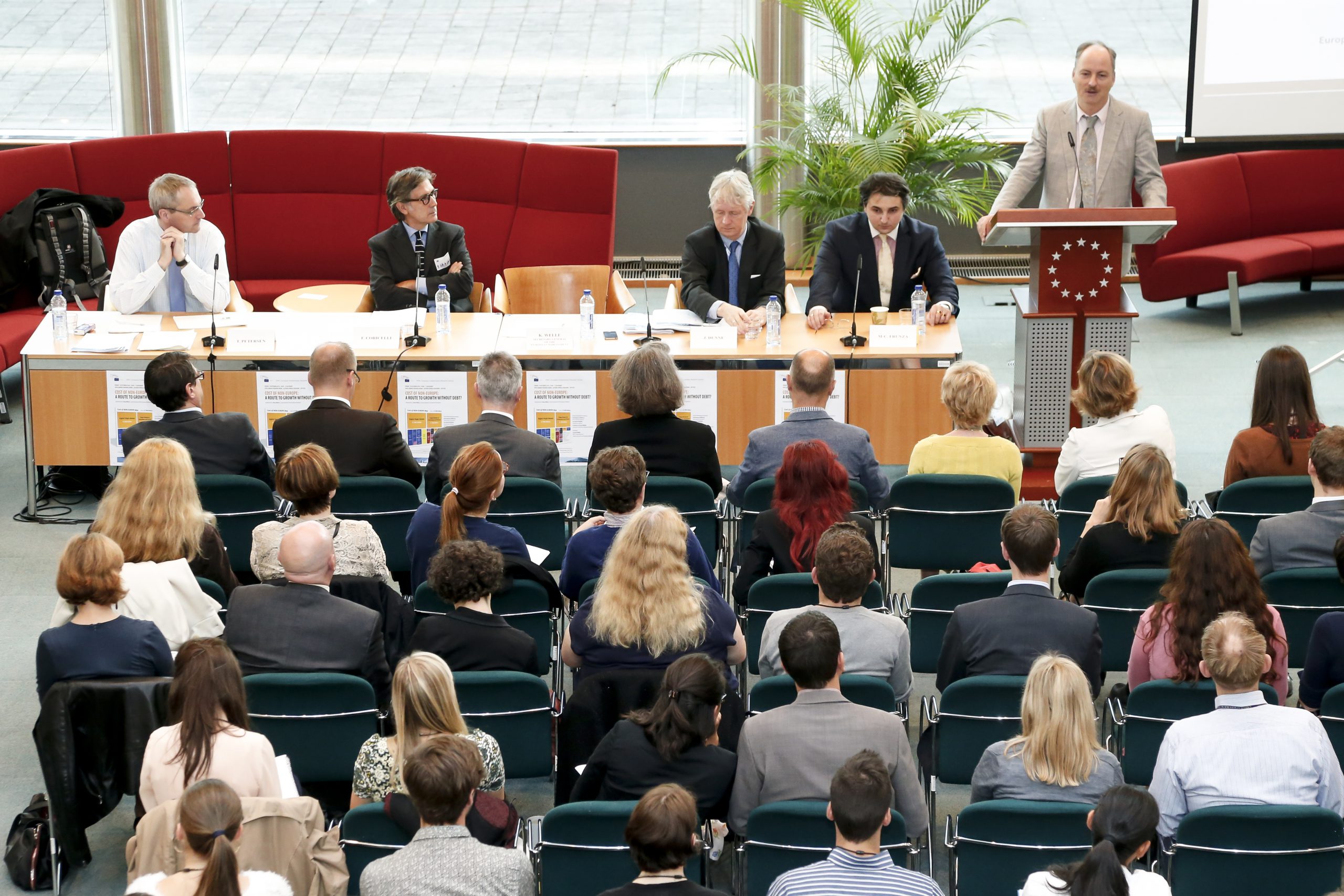Written by Kristina Svobodová and Zsolt Pataki
A Panel Discussion on ‘Cost of Non-Europe: A Route to Growth without Debt?’ took place on 10 October in the EPRS Library Reading Room.
The main goal was to present and discuss the Mapping the ‘Cost of Non-Europe’, 2014-19 study, focusing on the topic of whether, and to what extent, Member States benefit from EU membership, as well as revising the Cecchini report, published in 1988. The featured study is the result of a long-term project undertaken by the European Parliament’s European Added Value Unit, in cooperation with the office of the Secretary-General and the Economic Governance Support Unit.
How we gain from the ‘Cost of Non-Europe’?

In his introductory speech, Klaus WELLE, Secretary General of the European Parliament, mentioned the necessity of having two approaches– both that of assessing the cost of actual regulation, as well as the cost of non-regulation. He emphasised the need to move beyond the ideological approach of merely addressing the impact of proposed legislation. Quantifying the cost of non-Europe enjoys the weight of several arguments: first, it helps to define a positive integration agenda for Europe. Second, it reintroduces a focus on outcome, a methodology often overshadowed by the focus on process. Third, it opens the dialogue with Eurosceptics, as it gives the argument of tangible economic benefits. ‘Cost of Non-Europe’ reports are not European Parliament-specific documents, but rather help establish consensus between European institutions on identified priorities.
Synthetic counterfactual method – Professor Coricelli, Paris School of Economics
In order to assess the impact of integration as a generator of growth, the key question to address is: what would have been the growth rates of per capita GDP in EU countries if they had not become fully-fledged EU members? The Synthetic Counterfactual Method answers this by developing a model for each European economy based on ‘placebo’ variables that would illustrate the state of the economy had the country not joined the EU. The analysis demonstrated that all Member States benefited from accession, on average, by 10% of their growth. The effect was dynamic and increased over time. In the case of the Eastern enlargement, however, the effect of accession was less pronounced because it had already kicked in during the rather long accession process. Nevertheless, the current dire economic conditions reflect the limitations of the EU architecture, especially those of the Euro in the face of large adverse shocks.
How to prevent crisis
Dr Marius-Cristian FRUNZA addressed the cost of non-Europe in two crisis scenarios: the financial crisis scenario and the sovereign crisis scenario. While financial crises are characterized by high market volatility, short term liquidity and credit default swap increase, he added that they are less endemic than sovereign crises and can be contained. He emphasised the importance of enhanced fiscal coordination, a common deposit guarantee scheme and fully-fledged banking union in preventing the crisis.
Why Greece did not benefit from EU membership
The speakers were in agreement on the observation that Greece was the only EU Member State not to benefit from joining the Union. Greece never implemented the reforms necessary to join the EU, nor fully joined the Single Market, an issue which became inflated over the years.
It was brought to the panel’s attention during the Q&A session, that quantifying, from a ‘Cost of Non-Europe’ perspective, the cost of austerity measures on European economies might be interesting.
Read more: The Cost of Non-Europe in the Single Market (Cecchini revisited)








Be the first to write a comment.